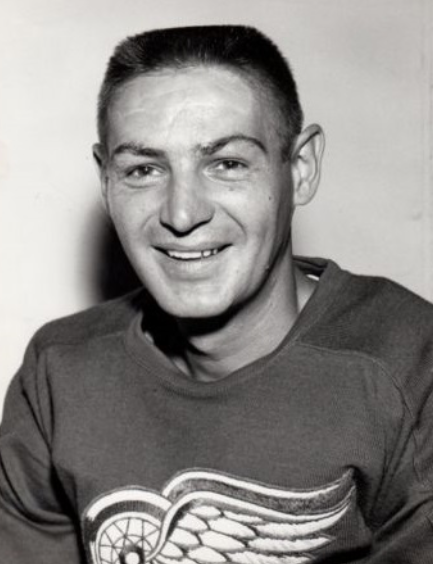- Home
- Hockey Resources
- 1967 NHL Expansion
1967 NHL Expansion

Terry Sawchuk, first player drafted in the 1967 NHL expansion.
The first NHL expansion occurred a full 50 years after the league was created, but the 1967 NHL expansion definitely lived up to the motto, “Go big or go home.” After the expansion, the NHL had doubled in size — from six to 12 teams — and established a solid presence across the U.S.
Why the League Expanded in 1967
Prior to 1967, the NHL had been stable for decades, with the Montreal Canadiens, Toronto Maple Leafs, New York Rangers, Boston Bruins, Chicago Blackhawks and Detroit Red Wings generating a great deal of excitement for their loyal fans — and ample revenues for ownership. The conservative and content owners of the six teams resisted expansion, but several factors led them to authorize the now famous first NHL expansion:
- Television networks were pressuring the league to expand, informing owners that an expansion would be required for the NHL to get a new TV contract. Although the league had not fully embraced TV — media exposure threatened to inflate player salaries — owners were afraid the rival WHL, with a strong lineup of western-U.S. teams, would get a TV contract and thus a major leg up on them.
- The American Football League (AFL) had become quite a success, proving America’s taste for upstart leagues. This further worried NHL owners about the WHL, but also encouraged them to think geographic expansion would be successful.
- Younger owners, more receptive to expansion than the previous generation, had come into power in Toronto, Montreal and New York.
Negotiations with TV networks ended when the NHL agreed to a contract with CBS, one that was contingent on a six-team expansion with two teams to be located in California.
Opposition to Expansion
In hindsight, it seems like big TV contracts and a league presence across North America would be the most natural and lucrative arrangement possible for the NHL. But at the time, not everyone was on board with the 1967 NHL expansion:
- Hockey purists thought the six existing NHL teams — which became known as the Original Six as a result of the 1967 expansion — were sacred and not to be disturbed.
- On a more practical note, it was feared that expansion would dilute talent across the league and reduce the quality of play — especially if the expansion were done quickly on a large scale rather than gradually, as had been done in Major League Baseball.
- With no Canadian teams being selected for the expansion — Vancouver came close —Canada was up in arms.
The 1967 NHL Expansion Draft
The six expansion teams approved by the NHL Board of Governors were the California Seals (San Francisco/Oakland), Los Angeles Kings, Minnesota North Stars, Philadelphia Flyers, Pittsburgh Penguins and St. Louis Blues.
Politics, of course, had a hand in the final selection. James Norris Jr., owner of the Blackhawks, wanted to unload another one of his assets, St. Louis Arena. He more or less forced the Board of Governors to put a team in St. Louis even though the city had not submitted a bid at the time of the selections. Also, Vancouver’s bid was rejected in part because the city didn’t have a stadium, but also because the Maple Leafs and Canadiens were reluctant to share TV revenue with another Canadian team.
Each expansion city had to pay an Original Six team $2 million to enter the NHL — a very high price indeed. Each Original Six team could protect 11 skaters and one goalie for the expansion draft. The Los Angeles Kings had the first pick, and selected Terry Sawchuk, the superb and future Hall of Fame goalie. The Kings also took the first skater, Montreal’s Gord Labossiere, as the 13th overall pick. The first-round picks went like this:
- LA Kings: Terry Sawchuk (Toronto Maple Leafs)
- Philadelphia Flyers: Bernie Parent (Boston Bruins)
- Louis Blues: Glenn Hall (Chicago Blackhawks)
- Minnesota North Stars: Cesare Maniago (New York Rangers)
- Pittsburgh Penguins: Joe Daley (Detroit Red Wings)
- California Seals: Charlie Hodge (Montreal Canadiens)
Expansion teams also acquired players prior to the draft by buying minor league hockey teams.
As a result of the 1967 expansion, the NHL gained strength that would help it deal with coming challenge from the WHL. Overnight, the NHL had gone from a regional and relatively low-profile professional league to one that would quickly develop a strong following across North America. The stage had been set.
(Image Credit – Wikimedia Commons)
 Loading... Please wait...
Loading... Please wait...


